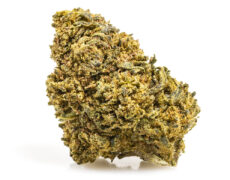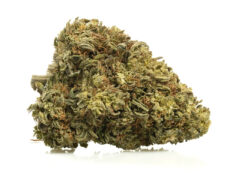Published on: 22/11/2025
Between science, culture, and geostrategy, these stories reveal the profound role of the plant in human history, far from stereotypes and facile reductions
Cannabis is one of the most discussed and polarizing plants of our time. Its name evokes contrasting images and opinions: for some, it is a symbol of counterculture and rebellion; for others, a therapeutic resource with great potential; for some, it represents a social danger; for others, a versatile and sustainable raw material.
This debate, often heated and based on entrenched positions, tends to obscure a much more complex and fascinating reality. The history of the relationship between humanity and cannabis is not a linear narrative, but an intricate mosaic of science, history, culture, and even international intrigue.
Beyond the conventional narratives, there are chapters in the history of cannabis that seem straight out of a novel.
From the most intimate biological mechanisms of our bodies to secret CIA laboratories, from the dawn of e-commerce to the crops of America’s founding fathers, the plant has left surprising traces in completely unexpected areas. We will explore seven of these stories, seven surprising facts that reveal how limited common perceptions often are and invite us to look at this plant with a broader and more informed perspective.


A vital link: endocannabinoids in breast milk
One of the most fascinating and touching discoveries linking human biology to the chemistry of cannabis does not concern psychoactive effects, but the very first moments of our lives.
Breast milk, the first and most complete nutrition for a newborn, naturally contains endocannabinoids, chemical compounds produced by the human body that are surprisingly similar to the cannabinoids found in the cannabis plant, such as the well-known CBD. This is not a coincidence, but a biologically vital mechanism.
They act as a switch that activates the sucking reflex.
Essentially, these molecules stimulate cannabinoid receptors in the baby’s mouth and brain, prompting them to seek out the mother’s breast and feed. Without this chemical stimulus, the newborn may not develop an adequate appetite or the motivation to make the effort necessary to feed.
This process can be seen as the first “lesson” the body teaches itself about how to eat. Endocannabinoids not only promote hunger, but also help calm the baby and promote bonding with the mother.
The discovery has shed new light on the endocannabinoid system, revealing it not as an accessory system related to pleasure or pain, but as a fundamental biological apparatus that regulates the most basic functions for survival from birth. The idea that our bodies use molecules similar to those in cannabis to teach us how to eat is a powerful testament to how nature reuses the same chemical tools for different purposes and how the study of one plant can reveal the most intimate secrets of our development.
Read also: 7 natural remedies for sleeping well without medication
The practical impossibility of a lethal overdose
In the debate on substance safety, one of the most frequently asked questions concerns the risk of overdose.
For many substances, from alcohol to opioids, excessive consumption can have fatal consequences. For cannabis, however, the situation is radically different. To date, there are no documented cases of deaths caused directly by a toxic THC overdose.
The reason for this exceptional safety is not accidental, but is written in the neurochemistry of our brain.
To understand why, we need to look at the distribution of cannabinoid receptors (particularly CB1) in the nervous system.
These receptors are the binding sites to which THC attaches to produce its effects. They are abundant in areas of the brain that regulate mood, memory, motor coordination, and perception, but they are noticeably scarce in the brainstem. The latter is the region of the brain that controls involuntary vital functions, such as heart rate and breathing.
This is the fundamental difference compared to more dangerous substances. Opioids, for example, act on receptors that are present in large quantities in the brainstem. An overdose of opioids can suppress the respiratory center, causing the person to stop breathing.
THC, having no significant “targets” in this critical area, cannot cause this type of fatal respiratory depression.
To reach a lethal level of THC toxicity, a person would have to consume an astronomical amount of cannabis in a very short period of time. Scientific estimates suggest that one would have to smoke hundreds of pounds of marijuana in about 15 minutes, a physically impossible feat.
Long before THC could reach toxic levels, the person would succumb to carbon monoxide poisoning from smoke inhalation.
This does not mean that excessive cannabis consumption is risk-free; it can cause acute anxiety, paranoia, nausea, and a significant deterioration in cognitive and motor skills. However, its almost non-existent lethal toxicity clearly distinguishes it from almost all other psychoactive substances.
Operation MKUltra: when the CIA studied cannabis as a truth serum
The history of cannabis is disturbingly intertwined with the world of espionage and secret mind control experiments.
During the height of the Cold War, in an atmosphere of paranoia and mutual suspicion between the superpowers, the US Central Intelligence Agency (CIA) launched a series of clandestine programs aimed at exploring the limits of the human psyche. The best known and most controversial of these was Project MKUltra.
Officially launched in the early 1950s, MKUltra’s goal was vast and terrifying: to investigate methods of psychological manipulation, behavior control, and advanced interrogation. Agents were searching for the so-called “truth serum,” a substance capable of forcing a subject to reveal information against their will. In this search, the CIA experimented with a wide range of substances, including LSD, hypnosis, paralyzing agents, and, indeed, cannabis derivatives.
The idea behind the use of cannabis was that its effects could induce a state of deep relaxation and disinhibition. It was hypothesized that, under these conditions, a prisoner or enemy spy would be more inclined to talk, lowering their psychological defenses.
Documents declassified in the 1970s, following congressional investigations, revealed the extent of these experiments, often conducted unethically on unwitting subjects, including American citizens, hospital patients, and prisoners.
However, cannabis proved to be an unreliable tool for the CIA’s purposes. Its effects were extremely variable and unpredictable. While some subjects became more talkative and relaxed, others fell into states of paranoia, anxiety, or confusion, making the information obtained unreliable. The reaction was too subjective to be standardized and used in an intelligence context.


The first online purchase in history? A deal for cannabis
In the age of Amazon, digital payments, and drone deliveries, it is difficult to imagine a world without e-commerce. Yet every great revolution has a beginning, often humble and unexpected. What is considered by many to be the very first commercial transaction carried out through a computer network did not involve a book or an electronic device, but a deal for the sale of cannabis.
The story takes us back to the early 1970s, a time when the “internet” as we know it did not yet exist. However, there was ARPANET, a pioneering computer network created by the US Department of Defense for military and academic research purposes. This network connected several American universities and research centers, including Stanford University in California and the Massachusetts Institute of Technology (MIT).
According to John Markoff’s book “What the Dormouse Said,” a group of Stanford students used their ARPANET accounts to organize the sale of a small amount of marijuana to their colleagues at MIT.
And let’s be clear, this was marijuana in every sense of the word, not CBD cannabis, which can now be purchased legally in many countries around the world.
It is important to note that this was not an online financial transaction in the modern sense of the term: there were no virtual shopping carts or credit cards. The network was simply used as a communication tool to coordinate the meeting and exchange, which then took place in person.
Despite its rudimentary nature, this event is symbolically significant. It represents the first documented case in which a computer network was used to facilitate a commercial activity.
The irony of the situation is remarkable: a technology developed by the government for military purposes was used for the first time, in a commercial context, for a clandestine and illegal activity. This little anecdote, almost a footnote in the history of technology, shows how human nature always finds ways to adapt and exploit new technologies in ways that their creators did not anticipate.
Read also: The story of the Hemp Body Car
The founding father and hemp: George Washington and his crops
The image of George Washington, the first president of the United States and an iconic figure in American history, is usually associated with the War of Independence and the birth of a nation. Few people know, however, that Washington was also a meticulous and innovative farmer, and one of the crops he devoted particular attention to on his Mount Vernon estate in Virginia was hemp.
It is important to make a clear distinction: Washington grew industrial hemp, also known today as legal weed, not marijuana for recreational purposes as some modern myths suggest. In the 18th century, hemp was an agricultural resource of strategic importance.
Its incredibly strong fibers were indispensable for the production of ropes, rigging, and sails for naval ships, as well as sturdy fabrics and sacks. Great Britain itself encouraged the cultivation of hemp in the colonies to ensure a stable supply for its powerful fleet.
Washington, as a keen businessman and farmer, recognized the economic potential of the plant. His personal diaries are full of detailed notes on sowing, harvesting, and processing methods.
One passage that has generated much discussion is where he expresses an interest in separating male plants from female plants.
Although this technique is used today to increase the production of flowers rich in psychoactive resin, at the time Washington’s goal was almost certainly related to improving fiber quality. There is no concrete evidence that the president consumed cannabis for personal or medical purposes. His interest was pragmatic and commercial, aimed at making his crops more productive and profitable.
Sumerian beer: an ancient cannabis-fermented drink?
When we think of the ancient uses of hemp, our minds immediately turn to the strong fibers used for ropes and fabrics, or perhaps its uses in spiritual rituals and traditional medical practices. However, some archaeological and linguistic evidence suggests a much more convivial and social use: the addition of cannabis to fermented beverages, a kind of ancient flavored beer.
The most fascinating traces take us to Mesopotamia, the “land between two rivers,” cradle of some of the world’s oldest civilizations, such as the Sumerians.
The Sumerians are considered among the first master brewers in history; for them, beer was not just a drink, but a staple food, a form of payment, and a central element of social and religious life.
The clue linking this ancient tradition to cannabis is linguistic in nature. In some Assyrian cuneiform texts, successors to the Sumerians in the region, the word “qunubu” appears. Historical linguists have noted a striking phonetic similarity and a probable common root with words used in other languages to describe cannabis.
According to this theory, which has not yet been proven, the seeds or flowers of the plant may have been added to barley wort during the fermentation process. The purpose could have been twofold: to flavor the drink, giving it a unique flavor profile, or to enrich it with the psychoactive properties of the plant.
Although the academic debate is still open, the idea that one of the first ‘special beers’ in history may have contained cannabis adds a fascinating piece to the millennial relationship between humans and this plant, offering a glimpse into the social life and pleasures of ancient Mesopotamian civilizations.
The paradox of the munchies: when the brain reverses the satiety signal
Those familiar with the effects of cannabis are aware of the phenomenon of the ‘munchies’, that almost irresistible urge to consume food.
For a long time, this effect was considered a simple increase in appetite. However, neuroscientific research has revealed a much more complex and paradoxical mechanism: THC does not simply stimulate hunger, but tricks the brain into believing it is hungry when it should feel full.
The explanation lies in a specific area of the brain called the hypothalamus, which acts as a control center for appetite regulation. Within the hypothalamus is a group of neurons known as pro-opiomelanocortin (POMC).
Normally, the job of these neurons is to signal satiety. A study conducted by researchers at Yale University has shown that THC acts in a completely counterintuitive way. By binding to the cannabinoid receptors on these POMC neurons, THC ‘hijacks’ them. Instead of activating them to release the satiety signal, it prompts them to release a chemical that, on the contrary, increases appetite.
In practice, THC causes the same switch that should turn off hunger to actually turn it on even more strongly.
It is a neurological paradox: the brain cells responsible for making us feel full are induced to promote an intense feeling of hunger.
One plant, countless stories
Our journey through these seven unexpected truths has taken us far beyond the boundaries of contemporary debate.
We have discovered that cannabis is not just a plant, but a common thread that intertwines with the most intimate aspects of human biology, drug safety, the history of espionage, the dawn of digital technology, and the agricultural foundations of a nation. From its vital function in breast milk to its almost non-existent lethal toxicity, through CIA experiments and George Washington’s crops, a portrait emerges of a plant whose cultural and scientific influence is immensely richer and more multifaceted than one might imagine.
These stories demonstrate that every topic, especially one as complex as this, deserves to be explored with curiosity and an open mind, beyond preconceptions.
Finally, it is essential to clarify the purely informative nature of this Justbob article.
Its purpose is not to influence personal opinions or encourage specific behaviors, but to provide deeper and more contextualized knowledge.
The laws governing cannabis are clear and must be respected. We invite you to consider this information as cultural enrichment, a stimulus to understand the complexity of the world around us, always acting in accordance with the regulations in force in your country.
Responsible knowledge is the first step towards a more mature understanding of any phenomenon.
Surprising facts about cannabis: takeaways
The presence of endocannabinoids in breast milk shows that our bodies use cannabis-like molecules to trigger essential functions from birth, such as the sucking reflex, calming, and maternal bonding. This challenges the idea that the endocannabinoid system is secondary or linked only to pleasure—it is a built-in biological mechanism that supports survival from the very start of life.
THC interacts with receptors spread across various brain regions, but not in the brainstem areas that control breathing and heart rate. This makes fatal overdose practically impossible under real conditions, unlike with alcohol or opioids. Overconsumption can cause discomfort—like anxiety or confusion—but it does not shut down the body’s vital systems, explaining the absence of documented deaths from THC alone.
The influence of cannabis appears in places far beyond modern debates: covert CIA programs like MKUltra, the very first transaction arranged via ARPANET, the hemp fields of George Washington, and even possible use in ancient Mesopotamian fermented drinks. These episodes reveal a plant that has quietly intersected science, politics, technology, and daily life in ways that go far beyond stereotypes.
Surprising facts about cannabis: FAQ
Do humans naturally produce cannabinoids?
Yes. The human body produces endocannabinoids, which are very similar to the cannabinoids found in cannabis. One of the clearest examples is their presence in breast milk. These molecules activate receptors in the newborn’s brain and mouth, triggering the sucking reflex, supporting the development of appetite, and reinforcing the natural bond between baby and mother.
Is a fatal overdose from cannabis possible?
There are no recorded deaths caused directly by toxic levels of THC. Cannabinoid receptors are almost absent in the brainstem, which regulates essential functions like breathing. While high consumption can cause unpleasant effects such as paranoia or nausea, a lethal dose would require an impossible quantity of cannabis in a very short time.
What are the CIA’s MKUltra experiments?
MKUltra was a secret program launched by the CIA in the 1950s to explore mind control and interrogation methods. Substances like LSD, sedatives, and cannabis extracts were tested to find a possible “truth serum”. Cannabis was ultimately discarded because its effects were inconsistent—some individuals relaxed and talked more, while others became anxious or disoriented.









